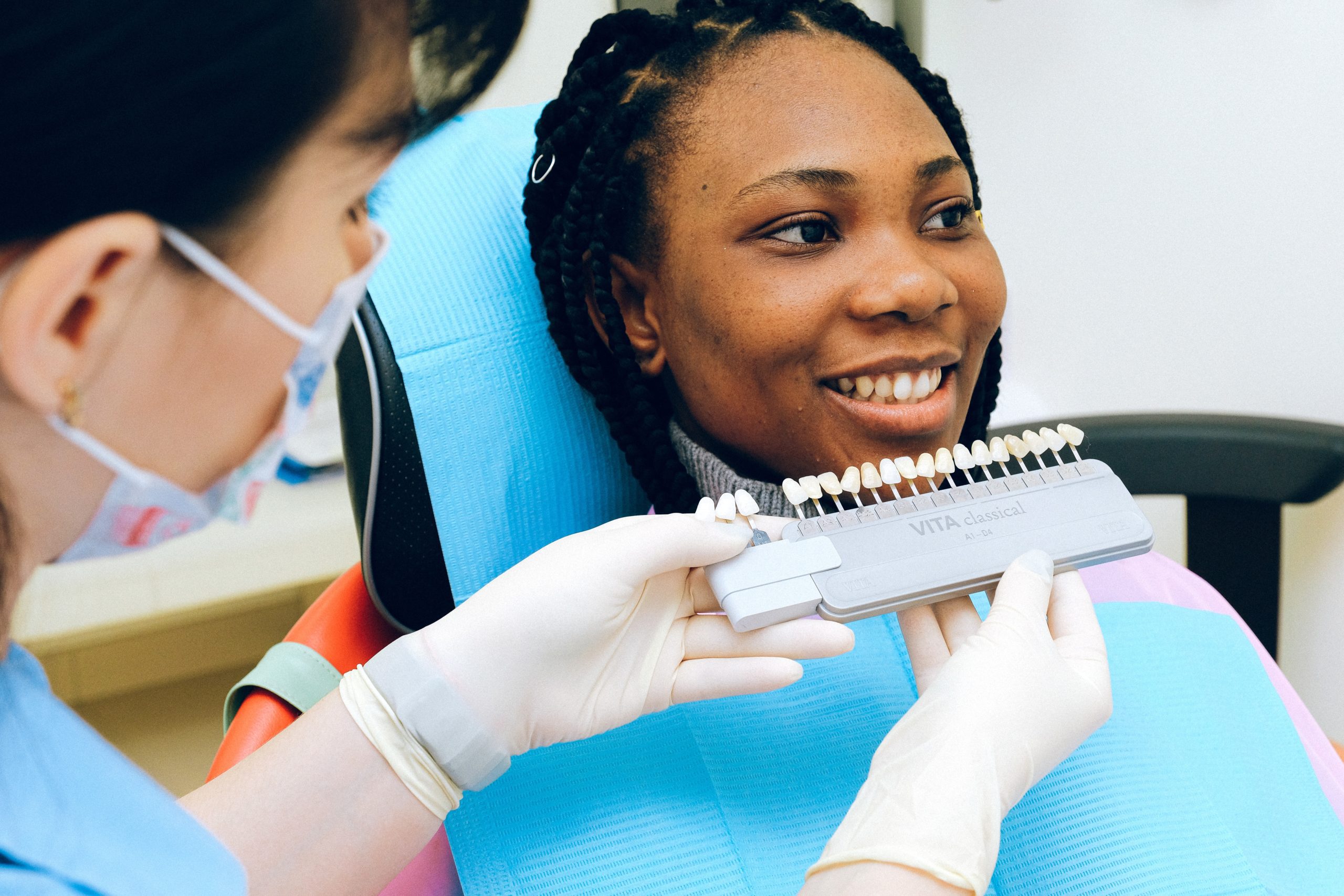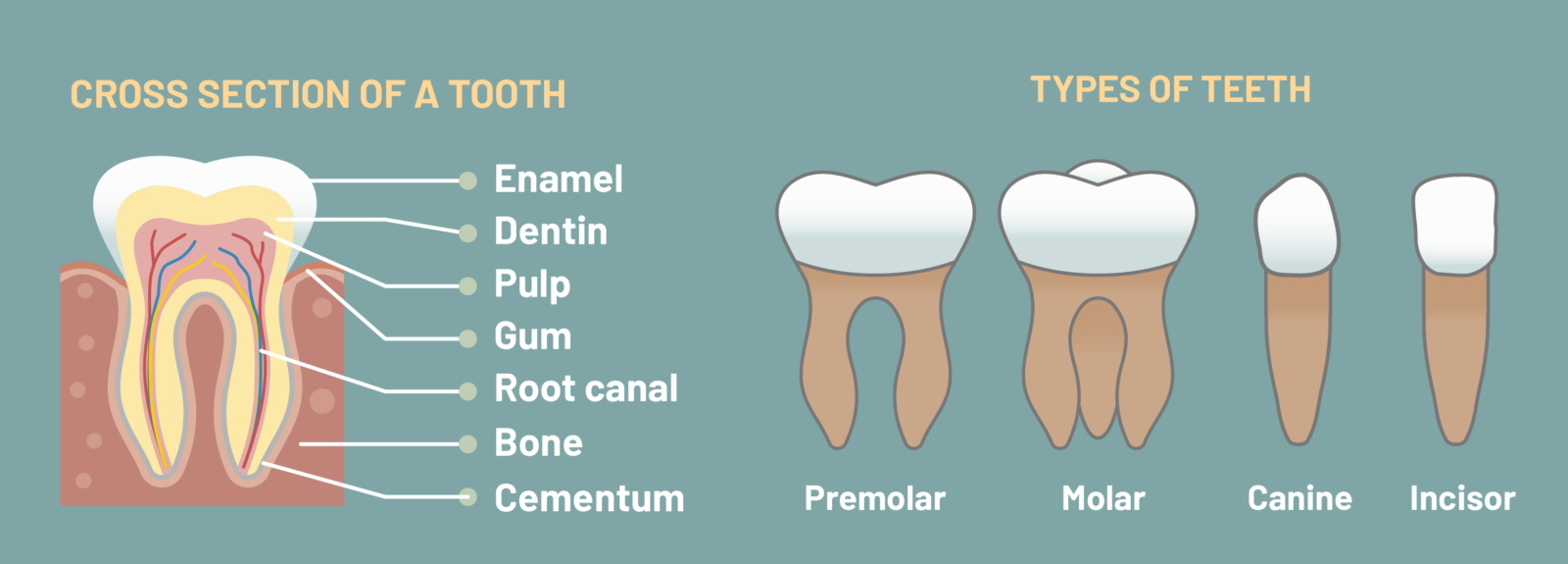We try very hard to preserve natural adult teeth, but sometimes a tooth extraction is necessary. You can rest assured that if we recommend removing a tooth, it is the last resort.
There are several reasons why we may need to remove a tooth, most often because of tooth decay and where the tooth is too badly damaged to restore. Another reason is an infection, when a cavity extends to the tooth’s centre, called the dental pulp containing nerves and blood vessels. We can often save an infected tooth with root canal therapy, but when the tooth is irreparable, we might need to remove the tooth.
Periodontal or gum disease can destroy tissues around teeth, so they become loose, and it may be necessary to extract these teeth. Sometimes, the jaw is not big enough to comfortably accommodate a complete set of teeth, leading to overcrowding. We may need to remove teeth in preparation for orthodontics. Wisdom tooth extraction is necessary if these teeth are impacted and attempt to erupt underneath the adjacent teeth or if they get infected.
Making Sure Tooth Removal Is Safe for You
Before removing your tooth, we will need to review your medical history thoroughly. Tooth removal is very safe, but you must tell us if you have any conditions that could affect this procedure, as it can allow harmful bacteria to enter your bloodstream. If you have a condition that increases this risk, we may prescribe antibiotics before and after tooth removal. These conditions include an impaired immune system, congenital heart defects, replacement heart valves or damaged heart valves, liver disease, artificial joint replacements, and a history of bacterial endocarditis.
What to Expect When You Have a Tooth Removed?
If you need a tooth removed, the actual process is often quite quick. We will ensure it is entirely painless, using local anaesthesia to numb the area. Special tools are used to loosen the tooth from its socket to remove it carefully, minimising damage to the surrounding bone and gum. Impacted wisdom teeth are removed through a tiny incision in the gum and bone and might be cut into several pieces so they can be removed more comfortably.
When the tooth is removed, we may place stitches or will leave the socket to heal naturally. A blood clot soon forms in the empty socket that helps to protect it while it heals.
What to Expect on the Same Day as Your Tooth Extraction?
After removing your tooth, we will give you lots of instructions on tooth extraction aftercare. You should take it easy for the rest of the day and do not exercise. If you want to lie down, then keep your head elevated to avoid bleeding. The following suggestions can help speed your recovery.
- Use an ice pack to help reduce any swelling immediately after the procedure, but only place it on the outside of your mouth for 10 minutes at a time.
- Take painkillers as prescribed.
- Avoid spitting or rinsing your mouth forcefully for the first 24 hours after tooth removal, as this could dislodge the blood clot formed in your socket.
- Do not drink from a straw for the first 24 hours.
- Do not smoke as this can impair healing.
- If the empty socket begins to bleed, bite down firmly on the piece of gauze provided to stop the bleeding. The bleeding should stop in about 15 minutes or so, but you can always call us for more information and help if it doesn’t.
- Use a warm saltwater rinse solution to clean your mouth gently as you won’t be able to brush the extraction site.
- Follow our instructions precisely on how to brush and floss your teeth, avoiding the extraction site.
- Avoid fiddling with the extraction site with your finger or tongue.
- Don’t eat anything very hot or cold, but drink plenty of water.
- When deciding what to eat after tooth extraction, stick to softer food like soup, mashed potato, smoothies and yoghurt.
What to Expect Two Days after Tooth Extraction Removal?
You may have some light bleeding, and the extraction site may feel tender and swollen. Continue taking any painkillers prescribed by our dentist and use ice packs on the outside of your face to help reduce any inflammation and swelling. Ensure you get plenty of rest and sleep, and use an extra pillow to keep your head raised while sleeping. At this stage, it’s important to make sure the blood clot remains in place in the empty socket, so do not rinse your mouth vigorously and avoid brushing the extraction site.
What to Expect 3 to 10 Days after Tooth Removal?
Continue to care for your remaining teeth by brushing them at least twice a day and flossing once a day but avoid brushing the surgical site. You can keep the area clean using a saltwater mouth rinse or an antimicrobial mouth rinse. Continue eating softer foods, chewing them on the opposite side of your mouth and avoid eating foods containing seeds or nuts or anything crunchy that could become stuck in the extraction site.
What Are the Signs Something Is Wrong with a Tooth Extraction Site?
Most times, the empty socket will heal comfortably and uneventfully. Once the anaesthetic wears off, it’s perfectly normal to feel some discomfort, and for the first 24 hours, you can expect to see some residual bleeding. If the empty socket is bleeding significantly and you cannot stop it more than four hours after tooth extraction surgery, please call us immediately. You should also call us if you are in severe pain so we can help you.
Other signs that something is wrong can occur days after a tooth is removed, and healing should be well underway. These include signs of infection such as developing a high fever and chills, feeling nauseous or vomiting, or noticing the area around the extraction site is excessively swollen and red or a nasty discharge. Another symptom that something is wrong is developing a cough, feeling short of breath or having chest pain.
If you have any of these signs or are worried or experience significant tooth extraction pain, please contact us for immediate help and advice. Very rarely, after tooth extraction, dry socket can develop. It tends to occur when the blood clot protecting the empty socket is dislodged, exposing the bone underneath, allowing infection to take hold. We can clean out the empty socket and place a calming and soothing dressing, reducing discomfort so the socket can begin to heal.
How Long Does It Take to Heal After a Tooth Extraction?
Initial healing takes place in the first one or two weeks, during which time new bone and gum tissue begin to grow in the empty socket. After initial healing, you can most likely begin to reintroduce regular foods to your diet. Except for wisdom teeth, it’s important to think about replacing adult teeth as soon as possible. Missing teeth can affect your bite, your ability to speak clearly, and your appearance. Potential solutions include dentures, a fixed dental bridge or dental implants.










